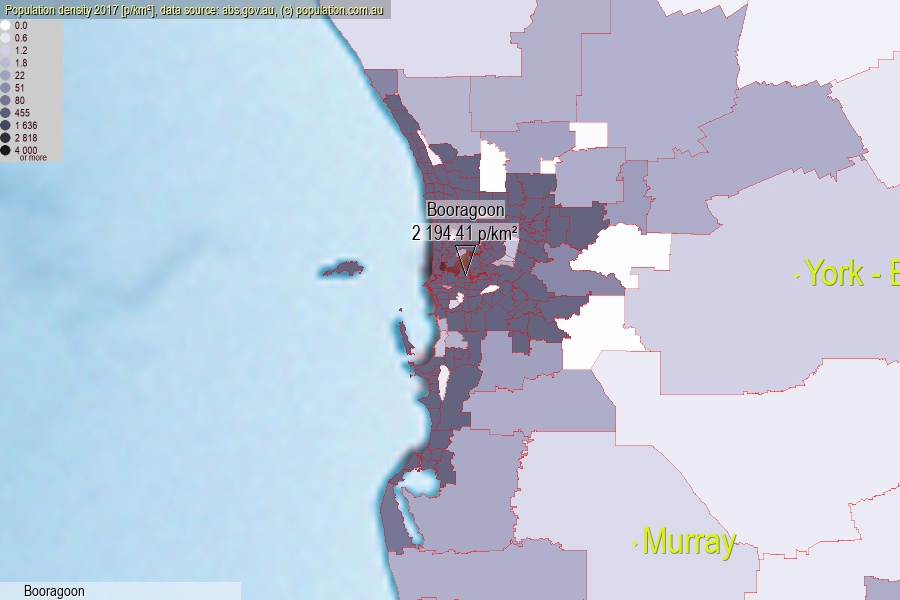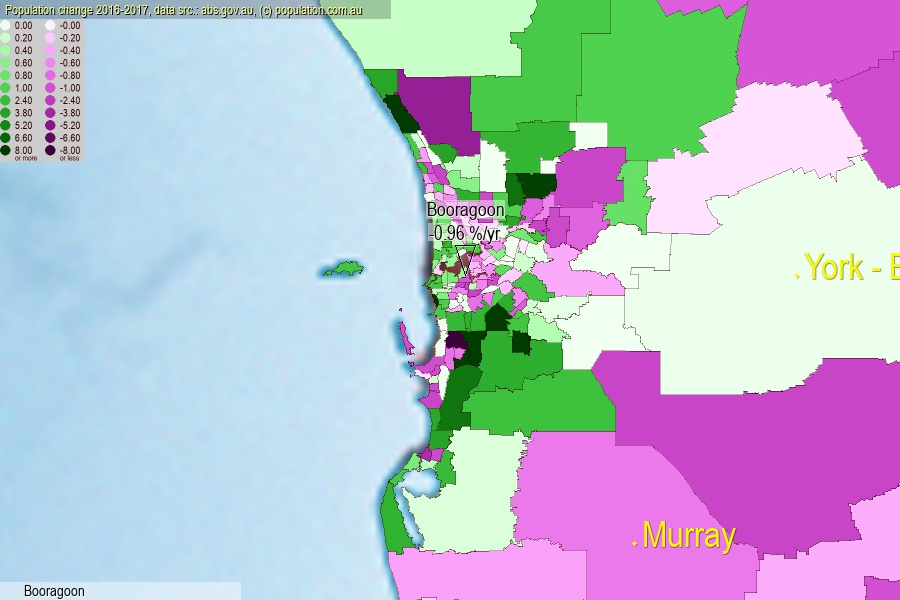 population.com.au
population.com.auLast official estimated population of Booragoon (as Statistical Area Level 2) was 14 922 people (on 2017-06-30)[2]. This was 0.06% of total Australian population and 0.576% of WA population. Area of Booragoon is 6.80 km², in this year population density was 2 194.41 p/km² . If population growth rate would be same as in period 2016-2017 (-0.96%/yr), Booragoon population in 2025 would be 13 818. [0]



Click to enlarge. Booragoon is located in the center of the images.
Population [people], population density [p./km²] and population change [%/year] [2]
View borders » (new window) [4]
[1991-1992] +0.26 %/Yr.
[1992-1993] -1.02 %/Yr.
[1993-1994] -0.43 %/Yr.
[1994-1995] +0.09 %/Yr.
[1995-1996] +1.06 %/Yr.
[1996-1997] +2.24 %/Yr.
[1997-1998] +2.01 %/Yr.
[1998-1999] +1.62 %/Yr.
[1999-2000] +1.95 %/Yr.
[2000-2001] +1.97 %/Yr.
[2001-2002] +1.16 %/Yr.
[2002-2003] +0.59 %/Yr.
[2003-2004] +0.59 %/Yr.
[2004-2005] +0.84 %/Yr.
[2005-2006] +0.46 %/Yr.
[2006-2007] +0.77 %/Yr.
[2007-2008] +0.80 %/Yr.
[2008-2009] +1.25 %/Yr.
[2009-2010] +1.05 %/Yr.
[2010-2011] +1.53 %/Yr.
[2011-2012] +1.81 %/Yr.
[2012-2013] +1.20 %/Yr.
[2013-2014] -0.15 %/Yr.
[2014-2015] -0.28 %/Yr.
[2015-2016] -0.97 %/Yr.
[2016-2017] -0.96 %/Yr.
[0] Calculated with linear interpolation from officially estimated population
[1] Read more about SA2 and Australian Statistical Geography Standard (ASGS) on abs.gov.au
[2] Population data from Australian Bureau of Statistics (Population and density: 2017; change: 2016-2017)
[3] Digital Boundaries: Australian Statistical Geography Standard (ASGS) 2016.
[4] Border coordinates are simplifyed using Ramer-Douglas-Peucker algorithm.